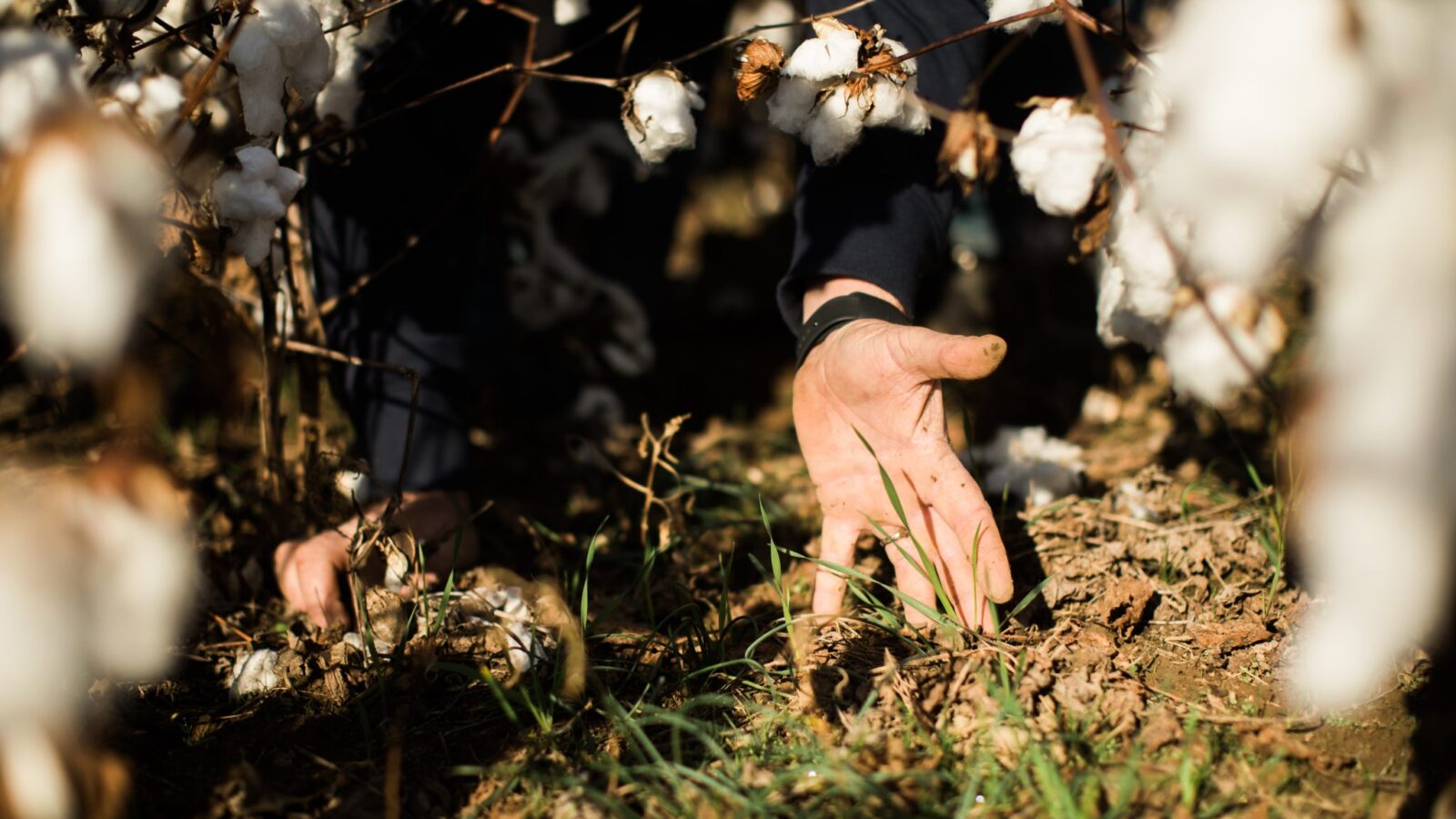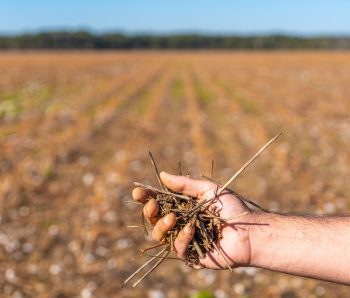
Soil is the basis of farmers’ livelihoods, which is why U.S. Cotton Trust Protocol growers are committed to protecting it through regenerative practices from cover cropping to no-till cultivation. And their efforts are paying off – The Trust Protocol recorded a decrease in soil loss and an increase in soil carbon in 2021/2022 when compared to 2020/2021.
We speak to two Trust Protocol growers and third-generation farmers – Bob Walker in Tennessee and Sledge Taylor in Mississippi – for an insight into the practices making the biggest difference.
Q: How are you working to continuously improve soil health on your farm?
Bob: Every acre of our farm has been under continuous no-tillage or minimum tillage for more than 20 years. This means that we avoid mechanical tillage of the soil and attempt to keep soil disturbance to an absolute minimum, which is one of the main principles of regenerative agriculture. By not tilling the soil and keeping soil disturbance low, we are helping increase organic matter over time.

Q: Why are regenerative practices important to soil health?
Sledge: Regenerative practices such as no-till and cover crops work really well in combination to protect our soils and build them. No-tilling the soil means that there is residue left from the previous year’s crop that stays on the land and acts like a shield. When it rains, there is a tremendous amount of energy in each drop that hits the soil. When you have the armor of the previous year’s crop residue to protect the soil—similar to an umbrella, the raindrop doesn’t hit the soil as hard and wear it down.
For the last five years, 95% of the acres we’ve planted have been without tillage. And virtually 12 months out of the year we have something green and growing on our soils—which includes cover crops in addition to our seasonal row crops such as cotton.
Q: What technology do you use to monitor soil health?
Bob: We use a variety of different technologies to monitor our soil throughout the year. We perform tissue testing across the farm, which are diagnostic tools that help with monitoring and managing soil fertility. This is done by pulling samples of leaves from cotton plants during the growing season, which are then sent to an agronomic lab – often at local universities or companies with testing programs – where they evaluate the plant’s nutrient levels.
We also receive weekly satellite imagery that allows us to see specific areas in our fields that may need attention. From satellite imagery, we receive color-coded maps that allow us to detect potential soil nutrient deficiencies, pest issues or diseases that may be impacting our crop. This also means that we can address issues on a timely basis instead of being surprised during harvest when it’s potentially too late to adjust.
Q: What is one of the most important practices you’ve implemented on your farm to improve soil health?
Sledge: I’ve been farming for 50 years, and I helped my dad and grandfather as a young boy. One of the issues I saw very early on was the ravages of erosion, or what is also known as soil loss. To reduce erosion, alongside implementing no-till practices, we also started planting cover crops. For the last three years, 50% of our acres have had cover crops planted on them.
Cover crop roots help improve soil structure and stability, which dramatically reduces soil erosion and runoff, increases infiltration, and leads to building organic matter in the soil.
Q: How is your membership in the U.S. Cotton Trust Protocol helping you improve your soil health?
Bob: The data and feedback we receive as members of the Trust Protocol provides us with a bar for where to start and where we can make improvements across our operation. The information allows us to look everything over with a critical eye and see where we can get better and what practices we may be able to implement to be even more sustainable.
Sledge: This farm is my canvas. It’s my family’s legacy and we’re always working to do the best we can. When you grow cotton, you’re always learning. It’s always a process. And as a member of the Trust Protocol, we’re receiving feedback to help us monitor what we are doing so that we can further improve our sustainability practices.


